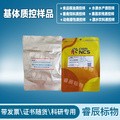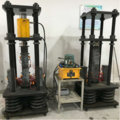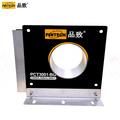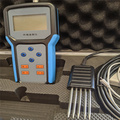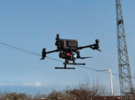PhenoFabTM服务主要包括: ♦? 大于300 m2的现代化温室;
♦ 带有特殊硬件的专业温室,环境条件完全可控;
♦ 针对不同的作物,有数字化表型鉴定、专业统计分析方法进行分析;
♦ 性状分析主要包括颜色、种芽和生物量、遗传特性、根系发育、冠层结构以及生物/非生物因子胁迫等等;
♦ 对植物单株进行多层次数字化的性状观察(角度、时间序列、光照等等);
♦ 专利软件进行植物表型从图像到数字化的统计学分析;
♦ 完全整合的图像数据库存储实验数据(类似于实验室信息管理系统);
♦ 自动浇水和营养盐供给系统。
Geoffrey B Fincher1 , Mark A Tester2 , Robert Furbank3 , Murray Badger4
- 1 Australian Research Council Centre of Excellence in Plant Cell Walls, School of Agriculture, Food and Wine, University of Adelaide, Waite Campus, Glen Osmond, SA 5064, Australia
- 2 Australian Centre for Plant Functional Genomics, School of Agriculture, Food and Wine, University of Adelaide, Waite Campus, Glen Osmond, SA 5064, Australia
- 3 High Resolution Plant Phenomics Centre, CSIRO Plant Industry, Canberra, ACT 2601, Australia
- 4 High Resolution Plant Phenomics Centre, Australian National University, Canberra, ACT 2601, Australia
The Australian Plant Phenomics Facility (APPF) is a $50 million project that has two nodes. At the first node, located at CSIRO Plant Industry and ANU in Canberra, new non-destructive phenomics technologies such as high resolution infra-red imaging are being adapted for in-depth application to individual plants and for use in the field.
The second node consists of the Plant Accelerator, which has recently been constructed on the Waite Campus of the University of Adelaide. It provides automated, high throughput, non-destructive imaging of plant populations in controlled environments. The Plant Accelerator node includes four “smarthouses”, which contain conveyor systems to deliver potted plants automatically to four imaging stations for high resolution, multi-aspect imaging at a range of visible and infra-red wavelengths. The Plant Accelerator has been used to generate data on the tolerance of wheat and barley lines to abiotic stresses such as salinity and borate toxicity, and the data have been compared with those obtained previously using several manual phenotyping protocols.
High-Throughput Phenotyping In Barley – The IPK Plant Phenomics Facilities
Anja Hartmann , Tobias Czauderna , Roberto Hoffmann , Christian Klukas , Thomas Altmann , Falk Schreiber , NILs Stein
Leibniz Institute of Crop Plant Research (IPK), Corrensstr. 3, 06466 Gatersleben, Germany
Automated high-throughput or high precision phenotyping remains one of the major bottlenecks in plant research since more and more plant genomes are being sequenced. In order to facilitate ways of automated phenotyping in the analysis of natural genetic diversity in cereal crops as well as in crop response to abiotic stresses, we are in the process of establishing a Lemnatec Scanalyzer system, which can accommodate 312 barley plants. Initial steps were made and lessons learned in course of setting up standardized calibration experiments. An image analysis software was developed (HT-Pheno) based on open source tools to allow for flexible basic determination of plant area. Extensive calibration experiments were performed to learn about the influence of environmental effects of the surrounding glasshouse. An overview of the initial experiences will be provided and discussed.
Gert-Jan Speckmann , Bas de Regt , Shital Dixit , Koen Huvenaars , Jose Guerra , Harold Verstegen , Marco G.M. van Schriek
Keygene N.V., Agro Business Park 90, 6708 PW, Wageningen, The Netherlands
The KeyTrack system allows for efficient execution of root research in a high throughput manner. The KeyTrack platform is a robust phenotyping platform in a greenhouse setup. The phenotyping is based on imaging technology and uses the potential of a track that moves all plants fully automated through the greenhouse compartment and scanning areas. The plants grow in individual containers and are photographed at pre-set points in time and from different angles.
The research presented encompasses the creation of an automated root phenotyping protocol and image analysis pipeline. The material used for this research is the tomato LA716 S. pennellii introgression line library created by prof. Dani Zamir. The research described merges the phenotypic data generated with genotypic knowledge, to feed lead discovery and root development in tomato.
Fred van Eeuwijk1,2 , Gerie van der Heijden1, , Yu Song3 , Gerrit Polder1 , Anja Dieleman4 , Chris Glasbey3
- 1 Biometris, Wageningen University and Research Centre, P.O. Box 100, 6700 AC Wageningen, The Netherlands
- 2 Centre for Biosystems Genomics, P.O. Box 98, 6700 AB Wageningen, The Netherlands
- 3 BioSS, Kings Buildings, Edinburgh EH9 3JZ, Scotland
- 4 Wageningen UR Greenhouse Horticulture, P.O. Box 644, 6700 AP Wageningen, The Netherlands
Kerstin A Nagel , Fiorani Fabio , Ulrich Schurr
Institute of Chemistry and Dynamics of the Geosphere ICG-3 (Phytosphere), Forschungszentrum Jülich GmbH, 52425 Jülich, Germany.
Catherine J Howarth , Alan P Gay , John Draper , Wayne Powell
IBERS Aberystwyth University Gogerddan Aberystwyth SY23 3EB U.K.
Francois Tardieu1 , Alain Charcosset2 , Xavier Draye3 , Graeme Hammer4 , Bjorn Usadel5 , Roberto Tuberosa6
- 1 INRA, UMR 759 LEPSE, 2 place Viala, 34060 Montpellier, France
- 2 INRA, Station de Génétique Végétale, Ferme du Moulon, 91190 Gif-sur-Yvette, France
- 3 Crop Physiology and Plant Breeding, Université catholique de Louvain, Croix du Sud 2/11, 1348 Louvain-la-Neuve, Belgium
- 4 Agricultural Production Systems Research Unit, The University of Queensland, Brisbane, Qld 4072, Australia
- 5 Max Planck Institute of Molecular Plant Physiology, Am Muehlenberg 1, 14476 Potsdam-Golm, Germany
- 6 DISTA, University of Bologna, Viale Fanin 44, 40127 Bologna, Italy
Develop new screens under controlled and field conditions that will consider indicators which are (i) highly heritable and measurable in a high-throughput fashion in phenotyping platforms, (ii) based on metabolite concentration, sensitivity parameters of models or hormonal balance, (iii) genetically related to target traits and able to predict genotype performance in the field via simulation and/or statistical models;
Explore the natural variation of the target traits by (i) linking the target traits to physiological pathways, genes or genomic regions, (ii) assessing the effects of a large allelic diversity for the four target traits via association genetics;
Support crop improvement strategies by developing methods for estimating the comparative advantages of relevant alleles and traits in fields with contrasting drought scenarios. This will be achieved via field experiments and by developing new crop models able to estimate the effects of alleles on crop growth, yield and water-use efficiency.
Christophe SALON , Christian JEUDY , Celine BERNARD , Richard THOMPSON , Vivienne GIANINAZZI-PEARSON , Xavier REBOUD , Philippe LEMANCEAU , Jacques CANEILL
UMR Agroecology, National Institute of Agronomical Research (INRA), 17 rue Sully, BP86510, 21065 Dijon Cedex
PPHD is constituted of a building (hosting activities related to plant material preparation, plant growth and post growth analysis) with S2 modular greenhouses and climatic chambers. These are equipped with conveyors belts to homogenize plant growth conditions and automatically bring plant units to the phenotyping cabinets. Phenotyping is based on image analysis (visible light, near infrared and fluorescence) which allows characterizing non destructively and automatically i) a large variety of plant species and specifically designed high throughput rhizotrons ii) seeds or microorganisms, plantlets. Because of its specificity consisting in the high throughput study of plant/plant and plant(pathogene-symbiotic)micro organisms interactions at the shoot level and more specifically the root level, PPHD constitutes a major infrastructure for identifying determinants of plant adaptation to new cropping systems displaying enhanced agro ecological services.
——Scientific image processing since 1998
LemnaTec公司位于德国亚琛市,于1998年5月由8位不同学科背景的合作者共同成立。公司一直延续着“结合多学科能力”的理念,因此,LemnaTec 科研团队由不同学科背景的专家组成,主要包括生物学家、物理学家、化学家、生物信息学家、生态毒理学家以及硬件软件工程师等等。他们为植物表型组学研究、高通量扫描(植物、种苗、昆虫以及其他生物)、自动化评估(生态毒理学效应等)提供了完美的解决方案。植物表型数字化图像通过Scanalyzer 3D和Scanalyzer HTS系统及时获取,利用高级的图像处理系统和整合的数据分析功能,能对任何一个可见的参数(如颜色、形状、大小和结构等)进行测定和深入的分析。LemnaTec的目标:超越人眼,具体化分析生物学性状!
——It is a Green Gene Revolution
KeyGene作为世界知名的生物公司,长期致力于作物产量、品质和健康状况的研究,并在多种作物上探索和发掘了大量的遗传变异。20多年来,KeyGene利用其尖端的分子育种技术和农作物性状改良平台,竭诚地为无数的育种公司提供技术支持,极大地推动了作物改良的进程。为了进一步的提供更加优质的服务,KeyGene公司放眼于未来,决定大力发展高通量植物表型鉴定技术,有效推动基因连锁控制的复杂性状的筛选和鉴定,更好的为遗传育种工作服务。KeyGene总部位于荷兰瓦赫宁根市,在美国马里兰州罗克维尔市设有分公司,与中国上海生命科学研究院设有合作实验室。
——服务于中国的植物表型组学研究
上海泽泉科技有限公司作为的植物科学与农业科学产品与系统解决方案提供商,是德国LemnaTec公司在中国的唯一合作伙伴。泽泉科技携手泽泉开放实验室专业的技术服务团队,致力于为作物育种、植物功能基因组学、植物表型组学等领域的客户提供完善的产品与系统解决方案。







